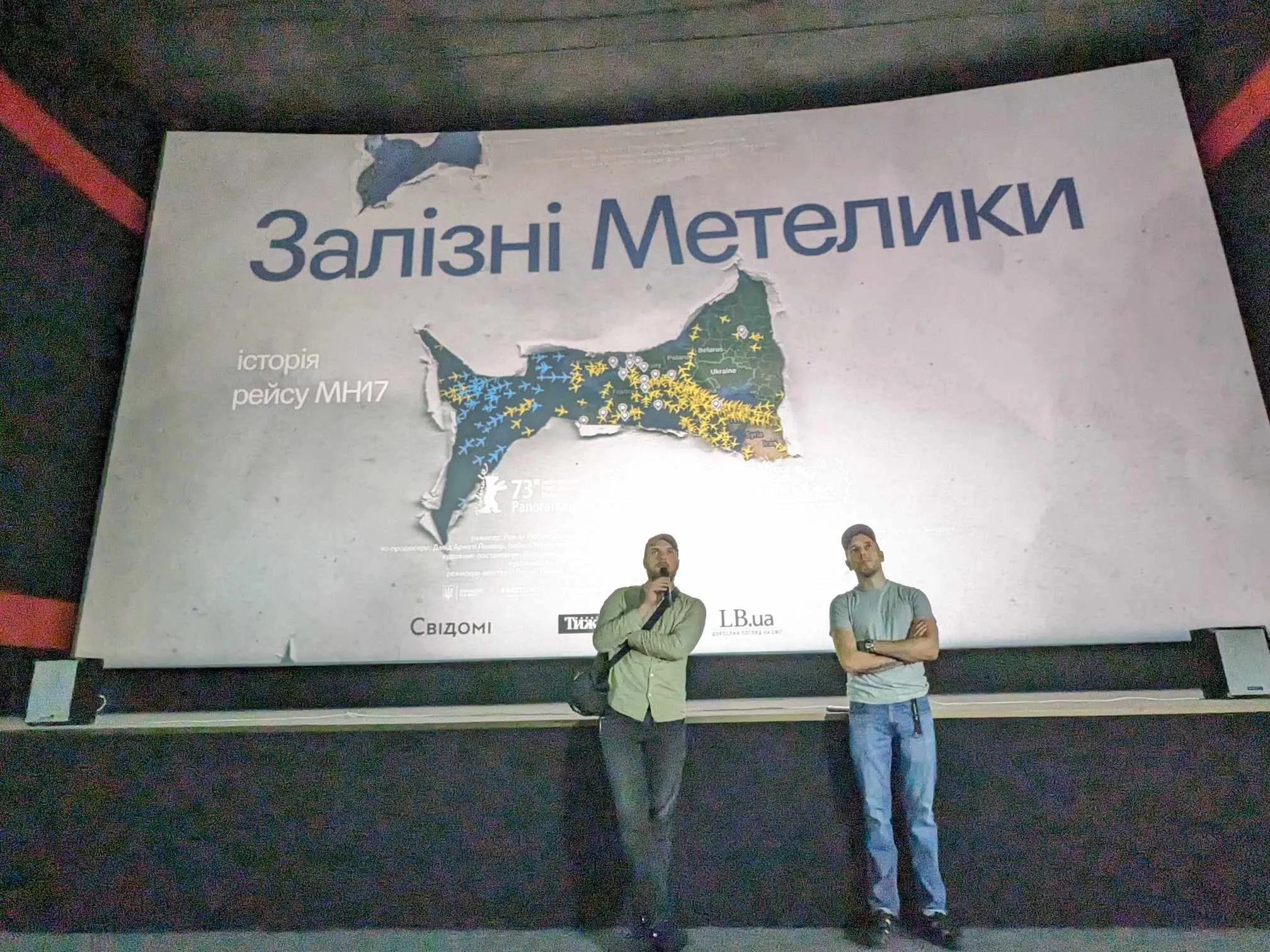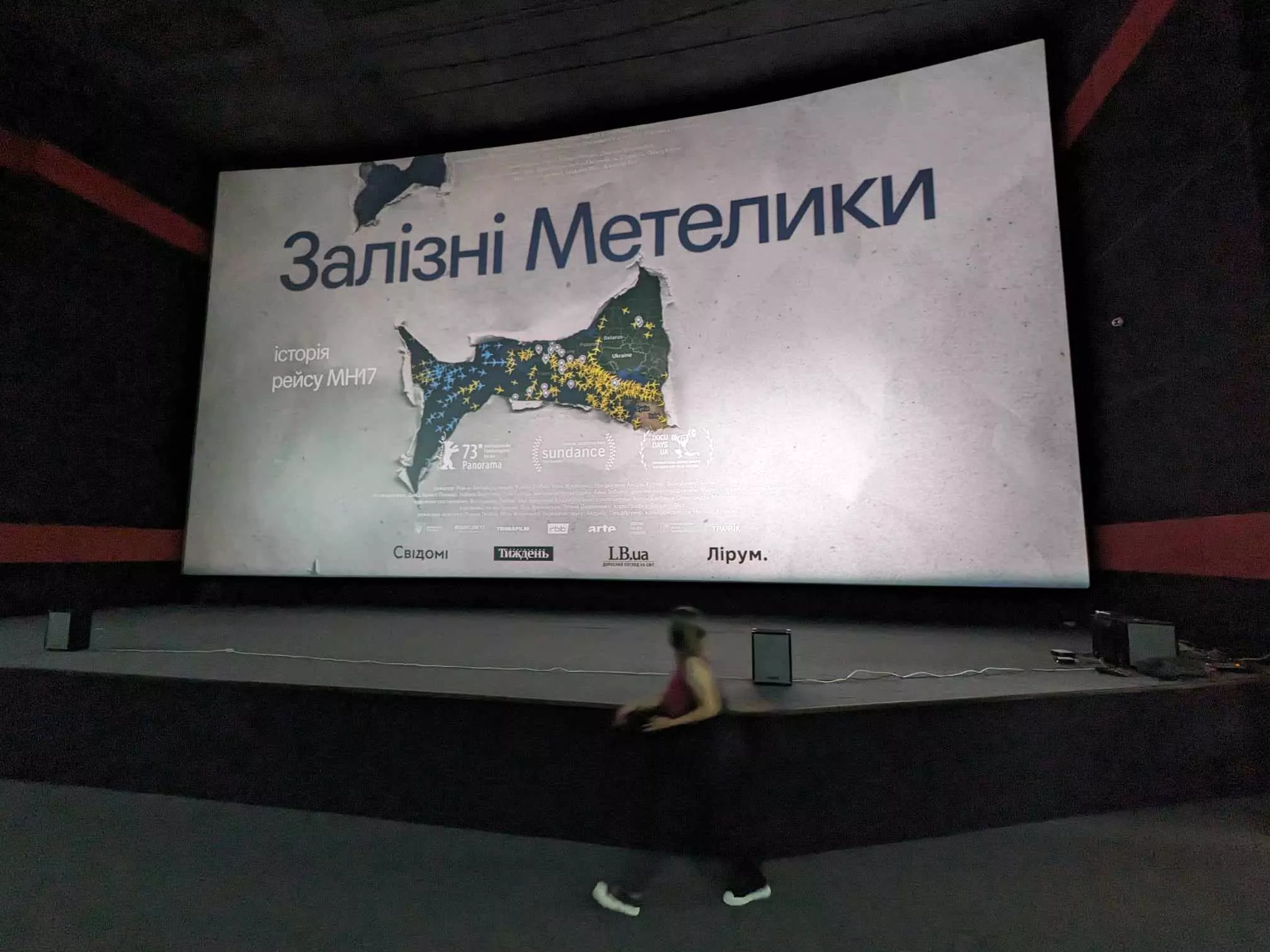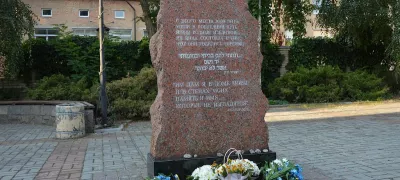
"Iron Butterflies" is a documentary film about the shooting down of Malaysia Airlines Flight MH17 by Russians at the beginning of the Russian-Ukrainian war. On the ninth anniversary of the tragedy, the film is released in theaters. A pre-premiere screening of the film took place in Poltava, where director Roman Liuby and producer and cinematographer Andriy Kotliar presented it.
"Poltava is the first city where we are showing this film. And this tour across Ukraine will serve as a report to you, fellow citizens, for the work we have done. The film is more oriented towards international audiences to promote Ukrainian narratives, the Ukrainian perspective on this specific tragedy, and address the question of when the war actually started," addressed Roman Liuby to the audience.
This Ukrainian film is indeed more oriented towards international audiences. In Ukraine, it is well known where the truth and the lies lie in the case of the downed Malaysian Boeing. In fact, it would be difficult to impress the global audience solely with the informational component of the film. By the time the filming of the movie began in 2019, films about MH17 had already been released by CNN, BBC, the Netherlands, and the Billingsgate film was already in development. But besides the investigative genre, something was still missing...
"You haven't seen such films before," warns Andriy Kotliar to the audience.
"There are not many surprises in the film for the Ukrainian viewer, as the informational component is well known. But there are other things in it that are difficult to express in words but can be expressed through other methods: the screen, movement, music, and I think that's what can represent value for you," says Roman Liuby.
And indeed, we haven't seen such a film. Each viewer had their expectations. Personally, I was expecting an investigation or stories from the victims' relatives, but what I saw were fragments of information from the Internet, black and white actor performances, pieces of Russian propaganda mixed with courtroom videos, an informational mess that accompanied the most notorious military crime in recent years.

"This is not a typical film about a downed plane. I am impressed by how Roman and Mila, the editing director, surgically dissected and examined Russian propaganda. It shows that propagandists work as military-political entities, creating dozens of fakes and seeking ways to influence the minds of the viewers. For some, the fake about 100 dead passengers on board works; for others, it's the fake with fortune teller Zaza, and for others, it's the pseudoscientific theory from a physicist. Recently, Russia committed a terrible terrorist crime by blowing up the Kakhovka reservoir, and they worked according to the same patterns as in the MH17 case, creating dozens of fakes for the European audience: that it was Ukraine that destroyed it with a missile or that the Freemasons blew it up, or that it fell by itself. And it is important to know and understand this," shares Andriy Kotliar.
Several months ago, the film was shown in The Hague, Netherlands, and the film's creators consider it symbolic. It is essential for the Ukrainian voice to be heard in the Netherlands because the MH17 case is closely related to the enormous amount of assistance Ukraine receives from the Dutch. This country has indeed gone through a challenging path to break what they like to call "300 years of successful economic relations since the time of Peter I."
The film is generally well received by international audiences. The theaters were full in Berlin at the Berlinale and in Karlovy Vary. The film has been seen in Australia, and it will be presented in South Korea in September.
"At the Berlinale, the main European film festival, the premiere of our film was sold out. 1100 people came on the first and second day of the screening. On the third day, there were also many viewers, and suddenly, during the third minute of the screening, I saw a couple leaving the theater. My first thought was that people didn't like the film. But as they passed by me, I heard the Moscow accent saying, 'They're showing CIA propaganda again.' So, primarily, it was not liked by those who are viewers of the Russian 'Channel One,' and all the critical reviews we received about this film, I think, were written by people who are still under the influence of Soviet propaganda," says Roman Liuby.
"At one of the main independent film festivals in the United States, 'Sundance,' an interesting incident occurred during the screening of our film. One of the viewers bought a ticket, expecting to see a documentary about the music band 'Iron Butterfly,' which he was a fan of in his childhood, and it turned out to be a film about the downing of the plane. He approached us afterward and said, 'Thank you, I'm impressed, I have become much closer to Ukraine.' Unfortunately, he became closer through a film about a military crime. We would like people to become closer to Ukraine through other content," shared Roman.
Some audience members in the theater couldn't hold back tears while watching the film, but the filmmakers did not aim to manipulate emotions.
"If we tried to manipulate the emotional component, the audience would be crying within the first 3 minutes because it is effortless to evoke emotions when 298 people died, and among them, a significant number were children scattered across a 12-square-kilometer field in Donetsk. Therefore, the filmmakers handled the audience's emotions with caution. The main feeling they tried to evoke was the unreality of what was happening. Because such things simply cannot happen in today's world. But this crime did happen."
"Iron Butterflies" was the working title of the film. It became clear from the film that it was a fragment of a missile shrapnel from the "Buk," and it looks like butterfly wings.
About the team: Unfortunately, two members of the project team were killed in the Russian-Ukrainian war, and one is still considered missing, so his colleagues hold onto a small hope that he is alive. In the film, a relative of one of the victims of the terrorist act, a Dutchman named Robbie, took part. He wasn't afraid to go to the crash site, to the heart of the conflict zone, and agreed to be part of the production.
In the credits, an attentive viewer noticed the name Stefan Bander, the grandson of Stepan Andriyovych, and it's not a joke.

There were more questions, but the audience was already waiting for the screening of "Mission: Impossible" behind the doors, so the documentary had to give way to the Hollywood action film.

вологість:
тиск:
вітер:
0 Comments
To add the comment